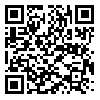1- Farhangian University , sara.bagheri@gmail.com
Abstract: (5572 Views)
People need coordination to accomplish joint tasks and pursue the same goal. The aim of this study was to investigate the predictive mechanisms in interpersonal coordination among elite rope jumping players. The research strategy was descriptive and applied and the statistical community consisted of 24 elite rope jumping players (14 to 18 years old). Subjects practiced various rope jumping tasks (individual and joint rope jumping at the same or different distances with online landing) for eight weeks until they could do them properly and without online feedback. The researcher used a Vicon motion analysis device to record three-dimensional movements of players' feet and ropes whirling and examined spatial and temporal parameters. The results of independent t-test, repeated measures ANOVA and one-way ANOVA showed that people were similar each other in movement onset time, hand-foot deviation time, timing variation in rope whirling, and landing position (P> 0.05), while a significant difference was observed in their jump height and movement time. So, players simulate each other's movements to coordinate with each other in different tasks, and their efforts distribution doesn't related to task characteristics. In fact increasing difficulty as well demand of joint task, amount of interpersonal coordination and consequently prediction ability will increase.
Type of Study: Applicable |
Subject:
motor behavior
Received: 2020/04/23 | Accepted: 2022/09/3 | ePublished ahead of print: 2022/09/3
Received: 2020/04/23 | Accepted: 2022/09/3 | ePublished ahead of print: 2022/09/3
Send email to the article author
| Rights and permissions | |
 | This work is licensed under a Creative Commons Attribution-NonCommercial 4.0 International License. |







